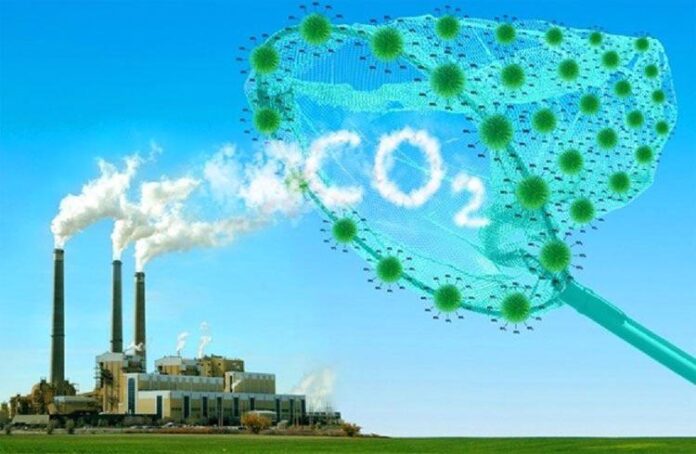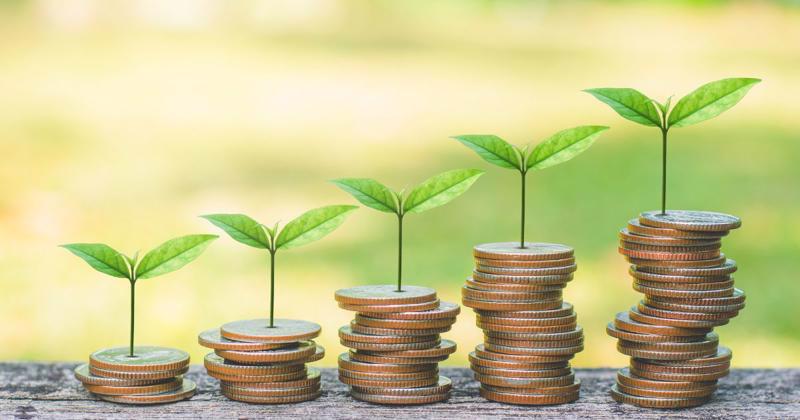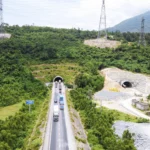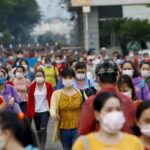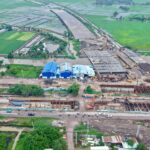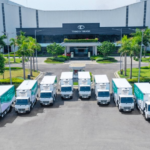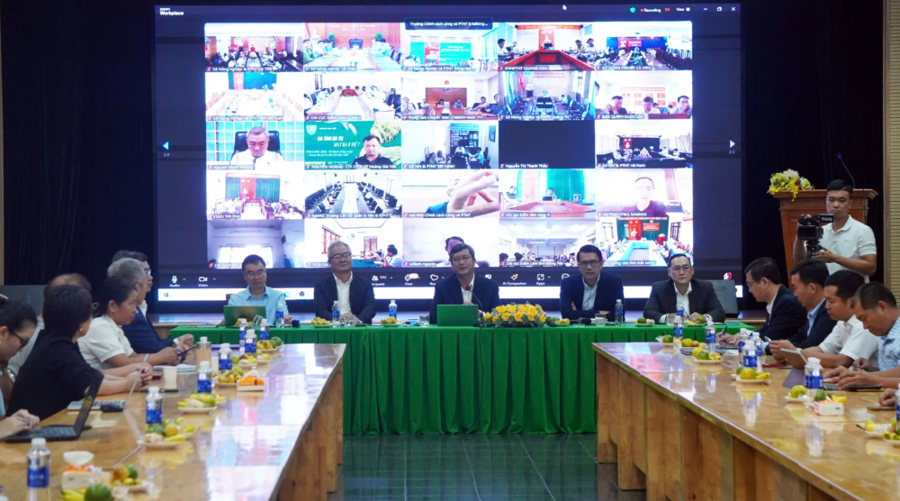The World Bank’s recently published report, “Vietnam 2045: Greener Growth – A Pathway to a Sustainable Future,” outlines opportunities for Vietnam to reduce carbon intensity in its economy and work towards the government’s goal of achieving net-zero emissions by 2050.
The report emphasizes the central role of the private sector and proposes steps to accelerate the energy transition, leveraging increasingly affordable renewable energy technologies to improve energy efficiency in industry. If effectively managed, this transition can unlock new drivers for innovation, growth, and job creation.
THE CHALLENGE OF CARBON EMISSIONS REDUCTION IN VIETNAM’S GROWTH MODEL
According to the World Bank report, despite ambitious commitments on climate change, Vietnam’s economic growth model remains carbon-intensive, with a higher ratio of cumulative emissions growth to GDP growth compared to peer countries. Vietnam is the only country in the East Asia and Pacific region to have increased the carbon intensity of its energy mix and energy intensity relative to GDP over the past decade.
This high carbon intensity in production poses risks to Vietnam’s competitiveness and export-oriented growth model. Net CO2 emissions associated with exports have been higher than those of peer countries since the early 2000s and continued to rise to 36% of output by 2021.
In 2024, over half of Vietnam’s exports, amounting to $225 billion, went to core OECD markets. However, more than 90% of global GDP is now generated in countries that have committed to net-zero emissions in the coming decades, altering their import demands.
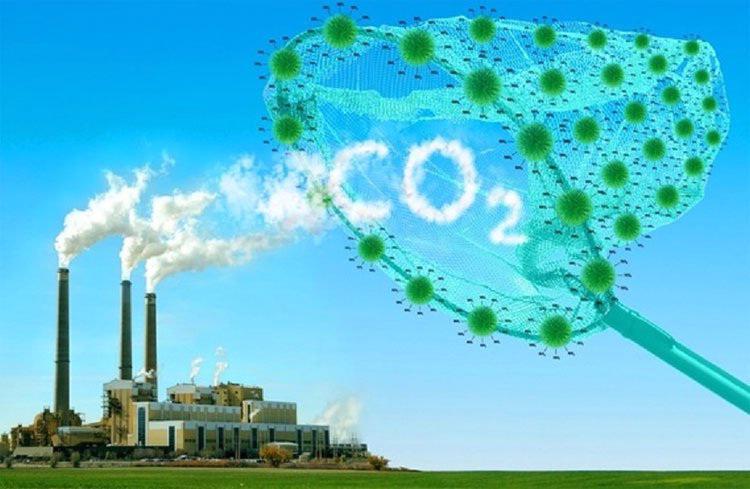
The European Union (EU) plans to implement the Carbon Border Adjustment Mechanism (CBAM), which will impose import taxes on five carbon-intensive products based on their carbon content.
While these products account for less than 4% of Vietnam’s exports to the EU, the potential expansion of the mechanism to other products could have a more significant impact. Additionally, multinational companies are increasingly committing to reducing greenhouse gas emissions across their value chains. For instance, the RE100 initiative, which aims for 100% renewable energy consumption at the corporate level by 2030, could make access to clean energy a distinct competitive advantage.
The World Bank’s analysis (2022) estimates that 2/3 of multinational companies headquartered in high-income countries have committed to net-zero emissions or other stringent climate targets. In addition, there is mounting pressure on multinationals to measure, disclose, and reduce their environmental impacts. For example, the EU’s Corporate Sustainability Due Diligence Directive (CSDDD) will require companies to disclose their environmental footprint and demonstrate environmental protection efforts.
As a result, Vietnamese industries may face reduced market access and declining demand if they fail to transition to greener practices, underscoring the urgent need to align domestic decarbonization efforts with global market trends to safeguard export opportunities and maintain growth.
IDENTIFYING VIETNAM’S OPPORTUNITIES FOR GREENER GROWTH
According to the report, while the country’s economic growth model remains carbon-intensive, Vietnam’s private sector has begun to seize opportunities for greener growth. Over the past decade, green economic activities have grown rapidly in Vietnam and now make a significant contribution to GDP growth. The government estimates that green economic activities generated $6.7 billion in 2020, equivalent to 2% of total GDP, with an annual growth rate of 10-13% during 2018–2020.
The energy sector made the largest contribution, accounting for 41% of total emissions, followed by agriculture and forestry (28%) and industrial activities (14%).
Vietnam has also witnessed high growth in the production and export of green technology, starting from a low base, but these exports are at risk due to global trade conflicts.
In 2023, Vietnam accounted for 5% of global exports of solar panels. Exports of parts and components in the solar panel value chain increased almost tenfold during 2012–2022, while exports in the wind turbine and electric vehicle value chains also surged. However, these export items face challenges in their export markets, including an investigation into solar panel exports to the United States, a primary market, by US authorities, with a preliminary ruling on countervailing duties unfavorable to Vietnam in October 2024.
Additionally, increasing imports of environmentally friendly goods, such as carbon efficiency-ensuring technologies, can help reduce environmental impacts, enhance energy savings, and facilitate adaptation to changing climate conditions.
According to the World Bank, environmentally friendly goods currently account for only 3% of Vietnam’s total imports, compared to 5% and 6% for Singapore and South Korea, respectively. This is despite Vietnam’s tariffs on environmentally friendly goods (0.3%) being significantly lower than the global average (2%) due to commitments under the Asia-Pacific Economic Cooperation.
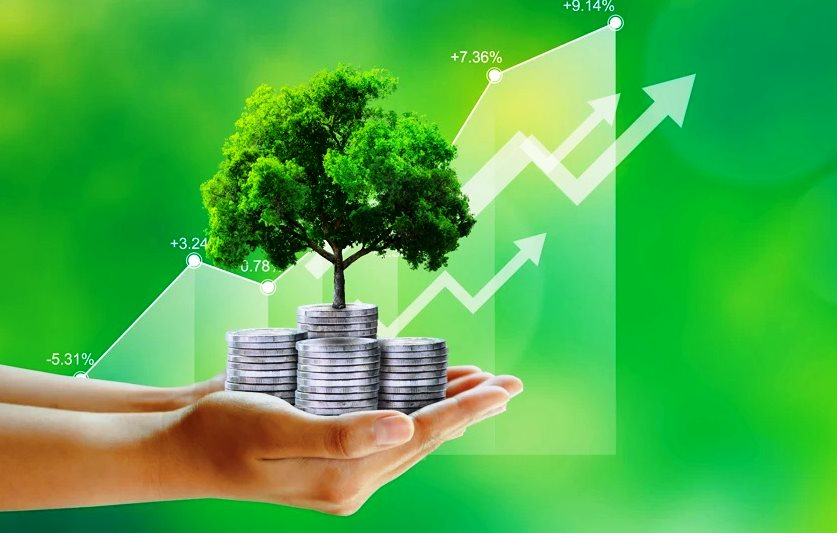
Vietnam has experienced a phase of rapid growth in domestic green energy capacity amid declining prices but faces institutional challenges in developing this sector.
Experts believe that in the coming years, Vietnam’s geographical advantages will enable the private sector to capitalize on the growing global demand for green technologies, goods, and services, along with low-cost green energy. Vietnam’s critical advantage is its superior position in Southeast Asia for developing wind and solar energy, a new form of competitive advantage. The country has the highest technical potential for wind and solar energy in the region, estimated at 1,000 GW per year, mainly due to its substantial technical potential for wind power.
Offshore wind projects combined with batteries are expected to become cheaper than new coal and gas power plants in the second half of the 2030s. This presents investment opportunities for the business community and authorities in Vietnam to attract businesses seeking more environmentally friendly production methods, such as members of the RE100 Climate Group.
The report also emphasizes the private sector’s crucial role in Vietnam’s efforts to reduce emissions and transition to a low-carbon economy. Mobilizing private capital is essential to meet investment needs, particularly in areas where private enterprises can promote efficiency enhancements and effective innovation.
According to the Climate and Development Report (CCDR), with appropriate policy reforms, the private sector can provide the majority of financing for various sectors, including energy and industry. Private investment has already significantly contributed to the country’s renewable energy capacity; for example, Vietnam’s solar power sector has grown from near zero to 17 GW today, mainly due to private sector participation.
Beyond renewable energy, the private sector also plays a pivotal role in promoting energy efficiency and emissions reduction across multiple industries and sectors. Decarbonization in sectors like cement and steel requires substantial private investment in low-carbon processes and technologies, including adopting energy-saving practices, transitioning to cleaner fuels, and investing in carbon capture and storage solutions.
To achieve its NetZero target, Vietnam must find solutions to reduce emissions while ensuring that energy remains affordable and industries maintain their competitiveness.
Experts believe that Vietnam can take action now to enhance its economy’s climate resilience and harmonize economic development with emissions reduction. By investing strategically and implementing effective policies, the country can continue on its development path, making strides in climate resilience and reducing carbon intensity.
The Mountain-Piercing Tunnel: A Robotics Revolution in Vietnam’s Infrastructure
The Deo Van Guan Tunnel is set to undergo a significant expansion with a new tunnel boring project. With a length of 555 meters and a width of 10.5 meters, this ambitious undertaking is slated for completion in 2025. To meet this tight deadline, a dedicated team of hundreds of workers, advanced tunnel-boring machines, and state-of-the-art robotics are working in unison.
“Social Security Recovers $4.6 Billion; Workers Reap the Benefits”
With a stringent approach to technology and inspections, Vietnam Social Security has successfully recovered nearly VND 1,100 billion in overdue payments. This significant achievement is a testament to their unwavering commitment to protecting the rightful interests of tens of thousands of hardworking employees across the nation.
The Shining Investment in the Pioneer Coastal Economic Zone
The Vietnamese government is committed to developing coastal economic zones, with Van Don taking the lead in this ambitious endeavor. With its advanced infrastructure and attractive policies, Van Don is poised to become a powerhouse, attracting significant investment and fostering regional economic growth.


























